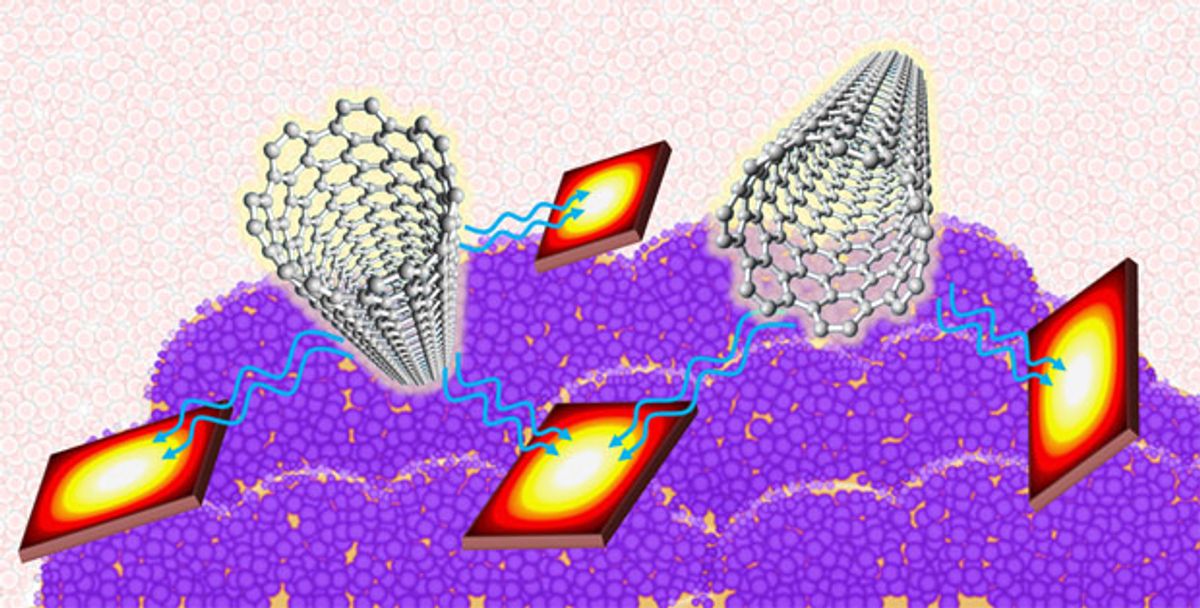Encircling tumors with a phalanx of miniature lasers could offer a new way to battle cancer, a team of Australian researchers is proposing.
Technically, the proposed device isn’t really a laser at all, but a spaser, with surface plasmons rather than light undergoing amplification. Plasmons are oscillations in electron density created in the surface of a small metal object when photons strike it. It’s possible to design a device so that the plasmons feed back on themselves, amplifying in much the same way photons bouncing around a laser cavity stimulate the emission of other photons, creating laser light.
“The spaser is basically the same as a laser,” says Chanaka Rupasinghe, a postgraduate student in electrical and computer engineering at Monash University near Melbourne, Australia. He and his professor, Malin Premaratne, presented their idea in a paper at the recent IEEE Photonics Conference, in Los Angeles.
Spasers have been built of gold nanoparticles surrounded by a silica shell and from cadmium sulfide nanowires on a silver substrate. Earlier this year, Rupasinghe and Premaratne proposed a different design, using graphene and carbon nanotubes. In their setup, a carbon nanotube would absorb the energy from a separate laser source and transfer it to the surface plasmons of a nearby nanoflake of graphene, creating the spaser effect. Pumping the spaser with 1200-nanometer light would cause it to output light at 1700 nm, Rupasinghe says. They argued their spaser would be mechanically strong but flexible, chemically and thermally stable, and compatible with biomedical applications.
Once they had their design, their next idea was to use it to replace some of the nanoparticles already being explored as cancer treatments that are being designed to deliver drugs directly to tumors. The nanotubes and graphene flakes could have antibodies or ligands attached to them that would draw them to the tumor. Once at the tumor, they’d self-assemble into an array of spasers. “You surround cancer cells with very tiny lasers, instead of nanoparticles,” Rupasinghe says.
An external laser producing light between 1000 and 1350 nm could penetrate several centimeters of human tissue and act as a power source for the spaser array. The spasers would then deliver a concentrated blast of heat to the cancer cells. At the same time, Rupasinghe says, the nanotubes could be designed to carry drugs to their target, hitting the tumor with a one-two punch.
No one has yet built the graphene-nanotube spasers, let alone started the long process to see whether they’d make a safe and effective cancer treatment. “Our team is basically a theoretical and modelling group,” Rupasinghe says. But his hope is that this idea may someday provide another weapon in the anti-tumor arsenal.
Neil Savage is a freelance science and technology writer based in Lowell, Mass., and a frequent contributor to IEEE Spectrum. His topics of interest include photonics, physics, computing, materials science, and semiconductors. His most recent article, “Tiny Satellites Could Distribute Quantum Keys,” describes an experiment in which cryptographic keys were distributed from satellites released from the International Space Station. He serves on the steering committee of New England Science Writers.



